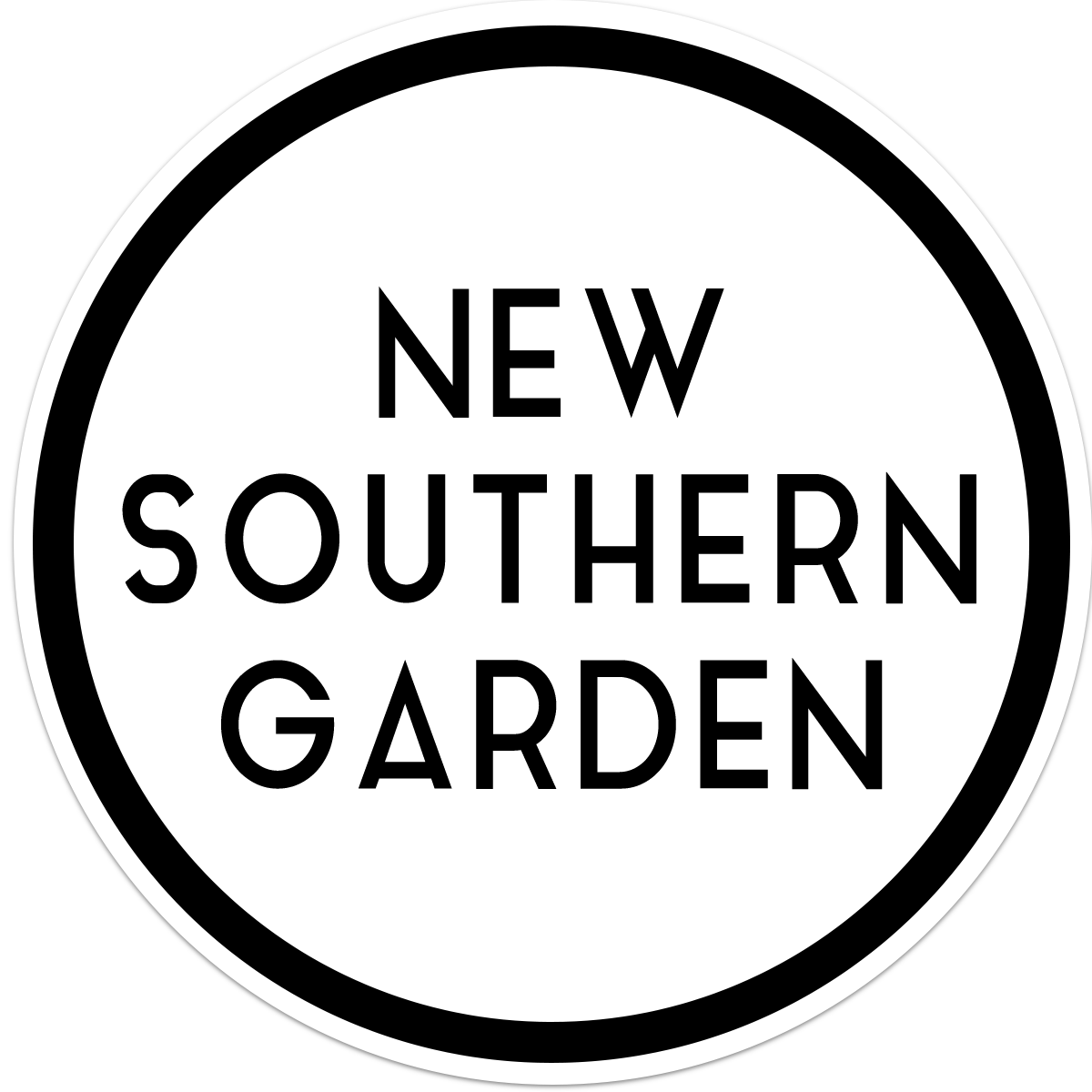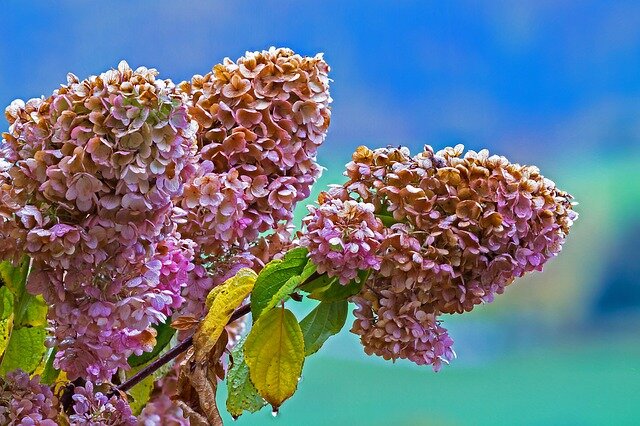The Top Four Hydrangeas of the South
The Top Four Hydrangeas of the South
By: Amelia Keener
Hydrangeas are one of the South’s most popular landscape shrubs, especially around this time of year. They’re starting to bud, and soon their flowers will be blooming all summer long!
There are many different kinds of hydrangeas, and here are four of them that really thrive in our southern weather:
• Bigleaf hydrangea – Hydrangea macrophylla
• Panicled Hydrangea – Hydrangea paniculata
• Smooth Hydrangea – Hydrangea arborescens
• Oakleaf Hydrangea – Hydrangea quercifolia
Bigleaf Hydrangea
The bigleaf hydrangea is the typical hydrangea; it has those blue or pink flowers that everyone knows and loves. It’s sometimes referred to as the “mophead hydrangea” due to its bloom structure. It is also sometimes referred to as a “snowball bush.” This can be confusing because the Chinese Viburnum (Viburnum macrocephalum) is also referred to as a Snowball Bush. But these are two completely different plants. The bigleaf hydrangea is from Japan, and it has many specific characteristics.
Characteristics
Leaves opposite of each other
Oval-shaped leaves with ridges (serration)
Large buds at the tip
Light brown, upright limbs
Center of stems are white and large
3’-6’ tall
Fast-growing
This hydrangea can grow in colder weather. It does best in zones 6-9, but it can grow in zone 5 if it is completely cut back in the winter. The stems will often die back naturally in the winter.
Bigleaf hydrangeas like lots of water as they tend to wilt when they don’t have enough. They also do best with some morning sun and afternoon shade. This keeps them out of our brutal summer heat. They can handle full sun with supplemental water and they can handle shade conditions. But your hydrangeas will look best with part sun! It’s best to prune them after their bloom time, in late summer.
A popular form of bigleaf hydrangea is the lace cap variety. These blossoms are not as full and have a lacy, airy appearance to them. Their flowers are smaller and clustered together.
Here are some other popular bigleafs:
‘All Summer Beauty’ Bigleaf Hydrangea
‘Wedding Gown’ Bigleaf Hydrangea
‘Penny Mac’ Bigleaf Hydrangea
Panicled Hydrangeas
The panicled hydrangea is a unique type of hydrangea. It has cone-shaped flowers that come in a variety of whites and creams. They even have a beautiful golden-brown color in the fall months once their petals have completely dried! These hydrangeas tend to change colors slightly as they mature. They usually go from green and yellow to white and pink. This gives them a more unique look than other hydrangeas.
Characteristics
Cone-shaped flowers
Smaller leaves that are opposite or whorled from each other with toothed edges
6’-10’ tall and some upwards even higher
Upright, coarsely-spreaded branches
Fast-growing
These hydrangeas are not completely drought- or heat-tolerant, so be sure to keep them watered! They can handle full sun to part shade. They grow best in zones 3-9, so they can handle the cold better than the bigleafs. They bloom on new growth; therefore, it’s best to prune them in the spring if you want a bushier shrub.
Here are some of our favorites:
‘Pinky Winky’ Panicled Hydrangea
‘Limelight’ Panicled Hydrangea
Smooth Hydrangea
These hydrangeas are native to the Southeast and are even found along the Chattahoochee River.
Characteristics
White flowers
Small petals
Leaves are opposite of each other
Stout stems that turn gray/tan to brown
3’-5’ tall
Flower June - September
These hydrangeas flower from both old and new growth. It’s best to prune these in the summer, but you can do spring as well. Either way, prune them after their first blooms have lost their beauty; simply cut off the flowers when they turn brown and be sure to fertilize them afterwards.
The ‘Annabelle’ Smooth Hydrangea is one of the most popular. It has huge white blooms and is definitely a crowd favorite!
Oakleaf Hydrangea
Oakleaf hydrangeas are becoming an extremely popular hydrangea here in the South! And since they are native here, it’s a no-brainer why! They are known for their gorgeous oak-like leaves and cinnamon-colored bark. These are native to the Southeast as well and can grow in zones 5-9. They prefer poorer soil conditions.
Characteristics
Huge oak-like leaves that are opposite of each other
Stout stems
Young growth is hairy, old growth has lenticles (pores)
Cinnamon-brown bark with age
4’-6’ tall
Leaves turn ruby red/orange in the fall
Cone-shaped flowers can be tight or lacy
These hydrangeas can handle sunny sites, but they mostly prefer shade and part-shade. They bloom on old wood, so don’t prune them in the spring! It’s best to prune them in the summertime after they bloom. Like the panicled hydrangea, the oakleaf comes in a dwarf varieties, such as ‘Munchkin.’ They have exfoliating bark as well, which gives them a nice appearance all winter long!
Here is one of our favorite oakleaf hydrangeas:
General Tips
Here are some tips and tricks to keep your hydrangeas looking fantastic all summer long!
Deadheading and Pruning
There’s a lot of fast growth going on in May. So now is the time to deadhead some of last year’s blooms on your hydrangeas! This will encourage them to bloom even more. This will also get rid of the seed pods and give the hydrangea a much cleaner appearance. It’s also time for some pruning to keep your hydrangea the shape you want. Cut back the new growth at the tips if you want a fuller shrub. This will cause the hydrangea to put out some side branches, giving it a fuller look. But beware! Now is not the best time to deadhead and prune all of your hydrangeas. Here’s a recap of the best times to deadhead and prune your hydrangeas:
Bigleaf - summer
Panicled - spring
Smooth - spring or summer (summer is best)
Oakleaf - summer
Fertilizing
We recommend using a slow-release fertilizer on your hydrangeas. Plants need lots of nutrients, but not all at once. Using a slow-release will ensure that they get what they need when they need it. Organic fertilizers are a great choice. They take longer to work, however, as they have to be broken down by Mother Nature first. Another great alternative is using slow-release salt-based fertilizers. These release nutrients on a regular schedule as the fertilizer pellet breaks down.
Watering
Hydrangeas need a lot of water, especially if they’re getting a lot of afternoon sun. Watering will encourage growth by increasing available moisture. It’s especially important if you planted a bare root hydrangea.
Coloring
So you might be wondering how to get your hydrangea the exact shade that you want. Well, wonder no more! Hydrangea color is determined by the soil’s acidity. If you have a higher pH level in your soil, your hydrangea will be more pink. If it’s a lower pH level, the flowers will be more blue. A neutral soil will give you purple blooms…hopefully. You can manipulate this by buying soil acidifier to lower the pH or something like garden lime to raise the pH level. Give it some time, and you’ll be able to get the perfect shade of color for your liking!
And there you have it! All the information you need to have some happy hydrangeas. So get growing!
















